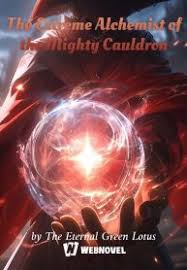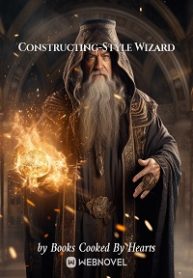The flying principle of the helicopter determines that its speed will not be too high, but its vertical take-off and landing, so that it does not have to use a dedicated runway, is a huge improvement.
But now, there is no truly qualified helicopter available in the world, and under the promotion of Cyric, the improvement of the helicopter finally shines with the glory of life.
These days, Cyric has been busy commanding the war on the Eastern Front. For him, he is mainly responsible for formulating strategy. The tactics are determined by lower-level commanders and will not interfere too much, and he also believes in his own subordinates. These fierce generals will not disappoint his hopes.
Just after the helicopter inspection was completed and many suggestions for improvement were made to the helicopter, Cyric received another exciting news before returning to his fortress.
"Head of Cyrek, the reason why our armor-piercing projectile cannot penetrate the Stalin tank has been found." said Albert Speer, who is in charge of military production.
In the battle on the front line, the new German tanks were awe-inspiring and attacking the city all the way, while the main force of the Soviets, the T-34, has been proven to be a backward product, which can only be resisted by the sea in numbers.
However, the new-style Stalin tanks of the Soviets surprised the German tank soldiers. German trump weapons, sub-caliber armor-piercing shells, were actually ineffective against this tank.
Fortunately, from the battlefield, they seized an almost complete Stalin tank, immediately transported it back to the rear, and sent it to the artillery experts of Henschel and Krupp for research.
"The inclination angle of their tank turret is too large." As the representative technical expert of the military, Knibokamp also participated in the analysis. At this time, in the shooting range of Henschel Company, through high-speed camera shooting and then Replay, Kneipokamp conducts a detailed analysis.
The previous T-34 was just ordinary tilted armor, but the current Stalin tank has developed this tilt to the extreme, becoming a terrifying tortoise shell.
The small space inside the tortoise shell is a disaster for the big Europeans. Even the Soviets have begun to find some small men to become tank soldiers.
But now, the hemispherical tortoise shell, the more upward, the greater the inclination, and it is simply the smoothest shape of the bullet avoidance.
In this way, when the armor-piercing projectile flew over, it was just like a water-flooding, and it was directly bounced, causing a serious ricochet.
At the same time, this can also explain the ineffectiveness of advanced sub-caliber armor-piercing projectiles, but the blunt-headed armor-piercing projectiles used before can have good results, because the blunt-headed armor-piercing projectiles have a positive effect, which can reduce the angle of inclination or even become a vertical shot. .
However, this turret was cast too thick, and its own blunt-headed armor-piercing projectile could not penetrate it from the front. In this way, this Soviet tank presented a new challenge to the German technicians.
"It seems that we can only install our 105mm tank gun." A technician said: "The 88mm tank gun cannot penetrate. The 105mm tank gun is absolutely no problem."
The development of German tank guns was upgraded in the order of 75, 88, 105. Now the main force in Germany is 88 mm tank guns, but pre-research on 105 mm tank guns has already begun.
"No." Who knows, this proposal ushered in Alfred's opposition: "Our 105mm tank gun is still classified, especially the electroslag remelting steel and body proposed by the head of Cyric. Regardless of the self-tightening and other processes, we have not thoroughly mastered it, and we cannot launch it now. In particular, our army is equipped with a large number of 88mm guns. If we directly replace it with 105mm, our production is insufficient and it will also cause great waste ."
Changing the caliber of the main tank gun is not so simple. At present, the 88mm tank gun has great potential. How can it be replaced with a new tank gun when it encounters a small set of twists and turns?
The German thinking is not a calibre.
Take a look at the Stalin tank. The 122mm gun is used. The caliber is large and the power is not small. However, the ammunition carried is too small and the loading is too slow, and it is not suitable for tank use.
"Yes, we'd better make improvements on the armor-piercing projectiles. This difficulty will not stump us." Knipokamp said: "As for the analysis of the failure of the tank shells against Stalin's tanks, I recommend submitting it to With the head of Cyric, I believe that our head of state will definitely provide us with more suitable ideas."
This is simply unbelievable. When the artillery experts present were at a loss when faced with a problem, they actually wanted to ask their heads of state to solve the problem. This is simply their shame.
However, they are proud that their head of state is omnipotent. The first caliber armour-piercing projectile was proposed by the head of Cyric. The plan to use the bullet support simply subverted their understanding. They are all old experts. , But the admiration for the Cyric head is absolutely from the heart.
Now that they have encountered a problem, they can't solve it, and Führer Cyric must have a solution.
Of course there is a way. Just when they had been meeting for two consecutive days to discuss a solution, the instructions of the head of Cyric finally came.
The instructions were sent by telegram, and there were not many words, only one line:
Improve the structure of the rear wing to reduce the rotation of the projectile.
Holding this instruction, Knepokamp patted his head fiercely. It was so stupid. Why didn't he think of such a simple solution?
A word awakened the dreamer.
Why does ricochet occur? It has a lot to do with the opponent's turret structure. The angle of inclination is large, and the shells are shot up diagonally, which makes it easy to fly. At the same time, there is another reason.
The shell is spinning.
Rotation will stabilize the cannonball. This is a huge invention. When the gun was first used, it flew a hundred meters away. With the rifling, the bullet rotates and the trajectory will be extremely stable.
Since then, until now, whether it is a gun or a cannon, almost all have rifling, and use rotation to stabilize.
It was nothing when the blunt-headed armor-piercing projectile was ~www.novelhall.com~ After all, the projectile body is thick, but the current sub-caliber armor-piercing projectile is different. Its essence is a shelling armor-piercing projectile. .
Objects with the same diameter but different lengths are more unstable under the premise of the same speed. Now, as German artillery experts want to further increase the aspect ratio, this shortcoming has begun to become prominent.
On the other hand, when it is in contact with the opponent's turret, the warhead rotates too fast and it is easier to be shot.
Once this reason is found, an improved solution is available.
Reduce the rotation of the projectile body, so as to reduce the chance of ricocheting, immediately follow this idea to trial production!
This is the principle in later generations. Shelling armor-piercing projectiles are all tail-stabilized armor-piercing projectiles. Because later generations are almost all smoothbore guns, there is no rifling in the barrel, and the gun pops out, all relying on the tail to stabilize, similar to a bow and arrow.
However, in the 70 or 80 years, NATO’s main force was 105 mm rifled guns. This type of gun also fired a tail stabilized armor-piercing projectile. After flying out, this type of tail helps reduce the rotation. The speed of several hundred thousand revolutions per minute is reduced to several thousand revolutions per minute.
In fact, the stabilized armour-piercing projectile fired by the smoothbore gun does not rotate without rotation during flight. The deflection angle of the tail wing can impart a rotational force to the core, and the rotation speed of the core is about several thousand revolutions per minute.
It can be seen that a few thousand revolutions per minute is the best rotation speed for a slender projectile, which not only maintains stability, but also reduces the possibility of ricocheting.
(There is also the saying of sliding belts. East China does not have a lot of contact. I hope that the familiar ones will greatly clarify the confusion. I have made two more technical chapters. I hope you will not get bored.)
Now that the idea is there, let's start experimenting! ()
Please remember the domain name of this book's first publication:. Mobile version reading URL:







